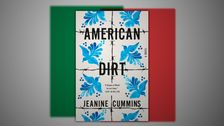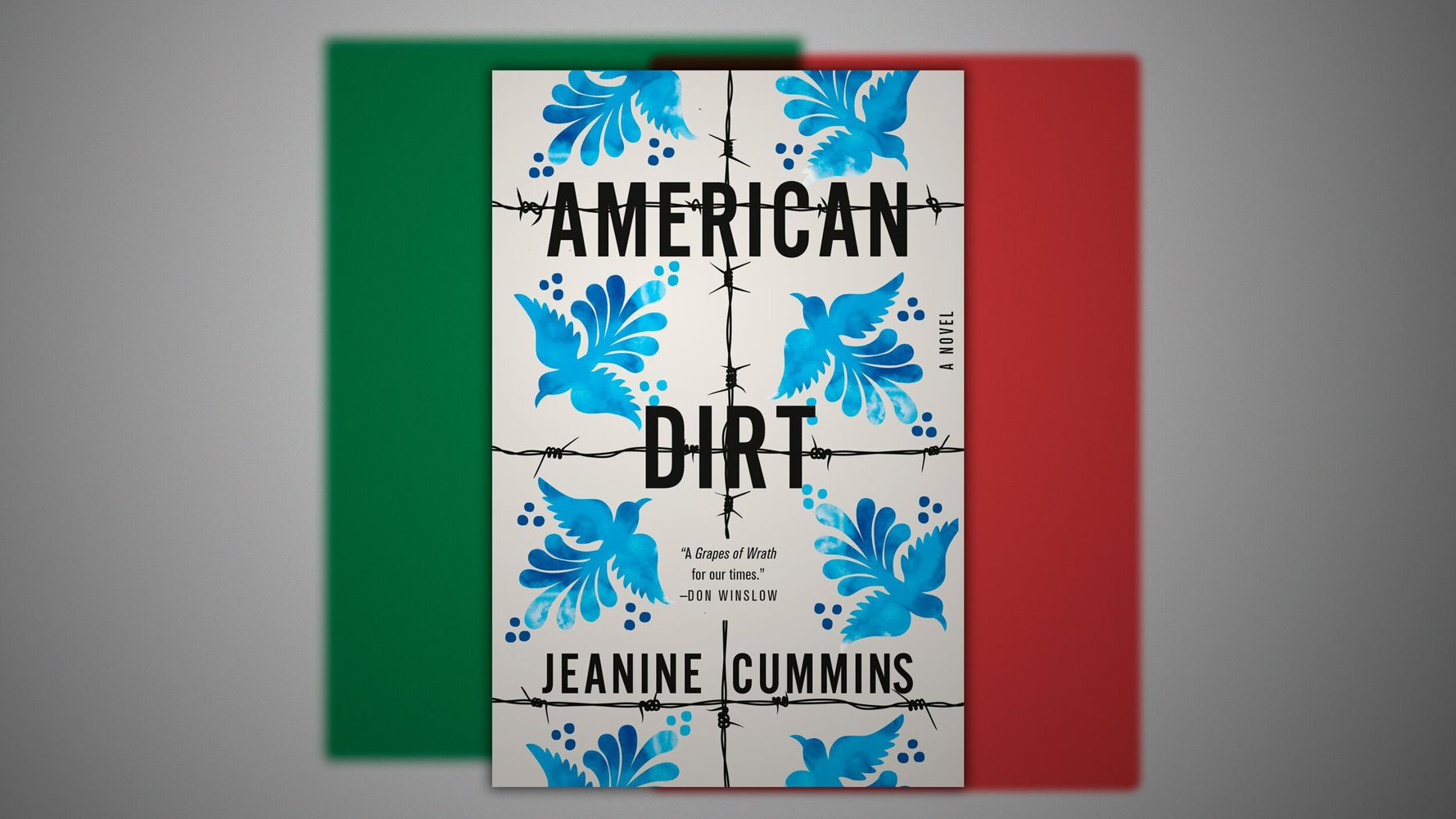[ad_1]

When I first read a scene about a young boy being crushed to death by a garbage truck in the new novel “American Dirt,” it made me queasy. Not because of its graphic depiction, or because the author, Jeanine Cummins, is not from Mexico, where the novel is set. What bothered me was the deja vu.
I had read this scene before, in Luis Alberto Urrea’s “By the Lake of Sleeping Children,” a nonfiction book that draws from Urrea’s years of humanitarian relief work in the most marginal communities of Tijuana.
Other scenes in “American Dirt” also bear significant similarity to Urrea’s work, and to that of Sonia Nazario, whose 2006 narrative nonfiction book, “Enrique’s Journey,” tells the story of a boy who migrates from Honduras to the United States atop the freight train known as La Bestia.
Cummins received significantly more preliminary publicity than those two authors, not to mention an advance of more than $1 million, according to Publisher’s Weekly. And she received it for a book that broadly imitates the existing works of these Latino authors, often poorly so.
“American Dirt,” an Oprah’s Book Club pick released earlier this week and set to be adapted into a movie, describes the journey of Lydia Quixano and her son, Luca, as they flee drug traffickers and cross Mexico on La Bestia. It has already sparked a maelstrom of criticism from many corners, including my own. Some of it concerns the novel’s bad writing; others object to the fact that Cummins does not speak Spanish and seems to have little knowledge of the country she depicts.
But the central issue here is not that a non-Mexican author wrote a book about Mexico. It is that the publishing industry backed an uninformed Anglo writer rather than a well-informed Latino or Latina writer. That is outrageous, patently unfair, and should make any sensible person queasy.
Cummins’ Imaginary Country
Cummins seems to have foreseen at least one criticism: the fact that she is not from Mexico. While Cummins described herself as white up to 2016, she has recently emphasized that she has a Puerto Rican grandmother. Her Twitter account describes her as an “Irlandaisa Boricua Persona,” which is fractured Spanish for “Irish Puerto Rican Person.” She stresses that her husband is a former undocumented immigrant (he came to the U.S. from Ireland).
And in the epilogue to “American Dirt,” she described her initial misgivings about the project: “I wished someone slightly browner than me would write it,” as if the only prerequisite for writing about contemporary Mexico were “brownness.” Her comment is insidiously shrewd: She is almost daring her critics to focus their complaints on skin color.
Some media outlets seem to have taken the bait, focusing on ethnicity in their coverage of the controversy. The Washington Post titled its article “‘American Dirt’ is a novel about Mexicans by a writer who isn’t. For some, that’s a problem.” In a similar vein, her supporters point to positive blurbs by Latina authors, as if that were the end of the conversation. This fixation on ethnicity, however, misses the point.
As Chicano author and professor David Bowles notes in a critique on Medium, “There is nothing wrong with a non-Mexican writing about the plight of Mexicans. What’s wrong is erasing authentic voices to sell an inaccurate cultural appropriation for millions.”
Cummins is not a person familiar with Mexico. She describes an imaginary country where people put sour cream on their street tacos, dress their chicken with BBQ sauce rather than mole, eat black licorice drops rather than mazapán, and fear the Bogeyman rather than El Coco. “American Dirt” is also riddled with linguistic gaffes, including a character thinking of her own mother as abuela (grandma).
Anyone who has been to Mexico will find the landscape of “American Dirt” quite alien. And yet, certain scenes have a strange ring of authenticity ― which readers of two Latino authors, in particular, will find familiar.
The protagonists’ train trip is strikingly similar to one in “Enrique’s Journey.” Cummins’ descriptions of a garbage dump in Tijuana and the border itself, as well as the trash truck scene, bear resemblance to passages in Urrea’s “By the Lake of Sleeping Children” as well as “Across the Wire.”
I don’t believe any of Cummins’ writing meets the legal definition of plagiarism. She was clever enough to sufficiently reword and reframe these elements, and credits these authors as “inspiration” in her epilogue. However, several elements in her novel lean much more heavily on these preexisting works than on any original research. Indeed, Cummins appears to have never visited some of her locations at all.
A Startling Ring Of Authenticity
The first sign is that some of the sites she describes don’t exist anymore. Lydia and her son meet a 10-year-old boy, Beto, who says he grew up in the garbage dump near the neighborhood of Fausto González in Tijuana. Urrea did years of humanitarian relief work in this dump, and it appears frequently in his early nonfiction books — however, it hasn’t existed for over 10 years. (The novel takes place in the present day.)
“American Dirt” also mimics Urrea’s tone and style, right down to comments on the regional speech of the border region, which Cummins writes is “not exactly the Spanish of Mexico, nor is it the English of the United States, but rather some kind of semantic borderland crossbreed.” But unlike Urrea, Cummins does not speak Spanish, much less understand the intricacies of Mexican regionalisms.
People do not speak some incomprehensible dialect on the border ― they simply have a few unique slang words. Cummins does not know this, which lends itself to some very humorous moments. When a boy in the novel says “Qué onda, güey?” Cummins writes that it’s “borderland slang that marks him immediately to be a northerner,” and that one of the protagonists doesn’t know what it means.
But this phrase is not some inscrutable border patois ― it is one of the most commonly used slang expressions in all of Mexico, equivalent to “What’s up, man?”
Elements from other authors’ works have been merged, incongruously, with the Mexico of Cummins’ imagination. While some of these ‘borrowed’ elements are comical, others are outright exploitative.
Cummins describes a migrant shelter in Celaya, Guanajuato, that Urrea has written about in a Time magazine article and a series of Facebook posts. But her novel doesn’t fully understand the shelter, either. She fails to note that it’s the only migrant shelter in Mexico that provides prosthetic limbs to people who lost theirs on La Bestia, either from falling onto the train tracks or from an attack by the machete-wielding Mara Salvatrucha gang members who practically control the train. These horrors are glaringly absent from Cummins’ story — she even describes the train as the one place that is out of reach from the criminals Lydia is fleeing.
These elements from other authors’ works have been merged, incongruously, with the Mexico of Cummins’ imagination. Myriam Gurba’s review describes it as “a Frankenstein of a book, a clumsy and distorted spectacle.”
While some of these “borrowed” elements are comical, others are outright exploitative. One glaring example is the boy’s death under a garbage truck.
Cummins writes that Beto’s brother “was squashed by the back tire of a garbage truck,” while Beto was “stunned by Ignacio’s screams.” Urrea’s book describes a similar scene: a truck that “lurched into reverse” backed over a boy, with others screaming as they watched.
Cummins’ account of Ignacio’s burial in the dump, beneath a hand-painted cross, is suspiciously similar to the graveyard in the first chapter of Urrea’s book. It is baffling that Cummins would reproduce an entire story of real human tragedy, rather than simply making one up from scratch.
The theme of exploitation was driven even further home during the book’s recent launch party, held in New York City’s exclusive Greenwich Tavern. In an elegant private dining room, the tables were adorned with floral arrangements wrapped in decorative barbed wire, evoking images of the border, the camps, the cages.
The publisher, Flatiron Books, is not engaging in the debate. As of this publication, the company has not responded to requests for comment sent via email and Facebook. Its Twitter account is currently not accepting messages, and has been silent since Tuesday’s announcement of the Oprah Book Club selection. Amazon reviews for the novel appear to have been closed.
Enough Is Enough
Urrea and Nazario are just two of the many Latino authors in the U.S. who have been writing about migration for years: Valeria Luiselli, Reyna Grande, Ingrid Rojas Contreras, and many others have told the migrant story. Still more are prepared to tell it again, with passion and personal experience. This is where the issue of race and ethnicity becomes glaringly apparent.
Latinos, and people of color in general, are woefully underrepresented on the U.S. literary scene. Latinos make up only 6% of the literary industry, according to a 2015 study on diversity in publishing by Lee & Low Books. This, in a nation that is close to 20% Latino.
Thousands of skilled, talented Latino and Latina authors are out there, striving to break into this industry. Plenty of them are every bit as skilled as Cummins ― moreso, I would venture. They are certainly more well-informed on matters of Mexico and migration.
And yet, “American Dirt” was the book that got the seven-figure advance, the spot in Oprah’s Book Club and the acclaim as a “novel that tells the migrant story.” The resulting outrage is finally bringing attention to these major forms of underrepresentation — it is now time for literary tastemakers to take action. Basta ya.
Calling all HuffPost superfans!
Sign up for membership to become a founding member and help shape HuffPost’s next chapter
[ad_2]
Source link

